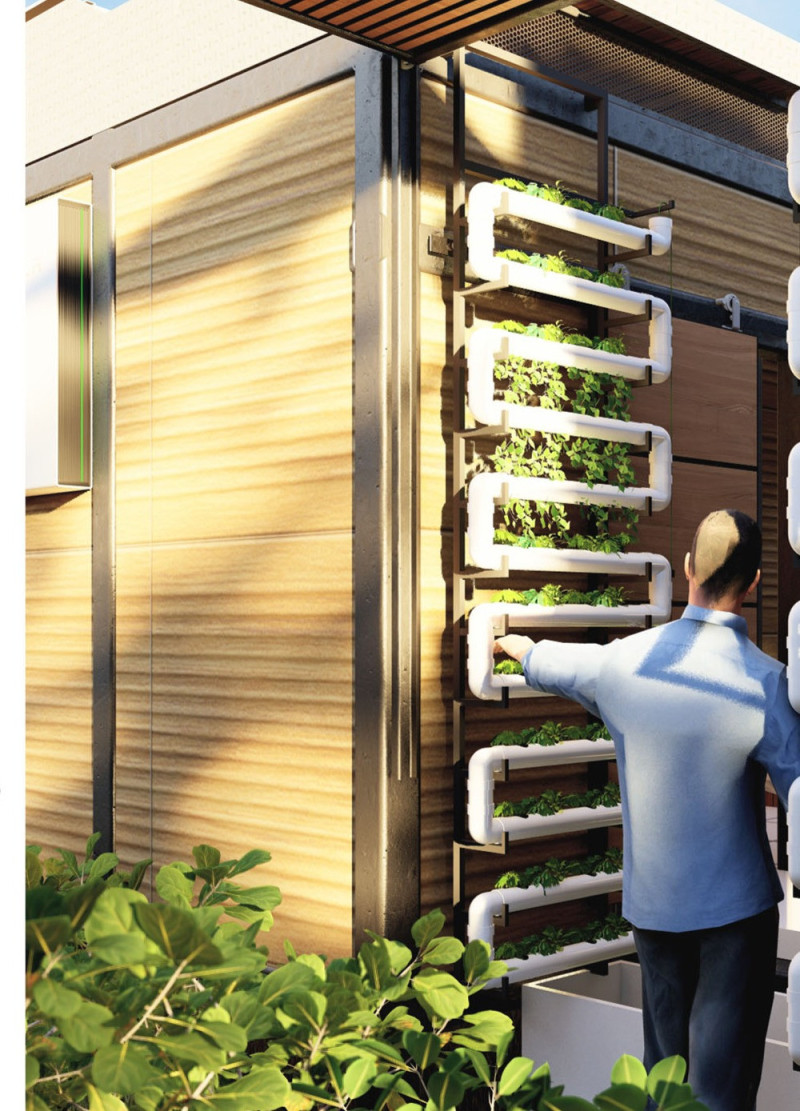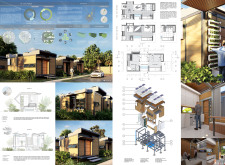5 key facts about this project
The architectural design incorporates modular principles, allowing for adjustments and expansions to accommodate various family dynamics over time. This adaptability ensures the home can evolve with its residents, reflecting their lifestyles and needs, whether it's for additional space or the integration of work-from-home capabilities. The layout of the Adaptive House is intentionally zoned, with distinct areas for private, social, and productive functions. Private areas, such as bedrooms, are oriented for optimal tranquility, filled with natural light. In contrast, communal spaces like the living and dining areas are designed as open plans to facilitate interaction and connection among family members.
One of the noteworthy aspects of this project is its emphasis on sustainability through a diverse selection of materials. The predominant use of sustainable timber contributes warmth and aesthetic appeal to the design while maintaining an environmentally responsible approach. Complementing the timber is the extensive use of glass, which enhances natural light penetration and fosters a connection between indoor and outdoor spaces. The structural integrity of the design is supported by steel, ensuring durability and resilience. Moreover, the incorporation of solar panels aligns with modern energy-efficient practices, significantly contributing to the building's ability to generate renewable energy.
The Adaptive House also includes unique architectural features that contribute to its functionality and user experience. Natural ventilation has been a significant consideration in the design, achieved through strategic window placements that promote airflow and reduce reliance on mechanical cooling systems. This attention to passive design not only enhances comfort but optimizes energy efficiency throughout the year. The introduction of vertical garden panels effectively integrates nature into the urban landscape, allowing residents to engage in urban gardening while improving biodiversity and air quality.
In addressing the pressing urban challenges of space constraints and environmental concerns, the Adaptive House embodies a progressive yet practical approach to residential architecture. It blends modern aesthetics with sustainable practices, providing residents with a home that aligns with their values of environmental stewardship and community living. The project emphasizes a holistic perspective where architecture becomes a facilitator of lifestyle, offering spaces that resonate with both contemporary demands and personal growth.
The design is not only pragmatic but also reflects a thoughtful consideration of how architecture can enhance the quality of urban life. By addressing the dynamic nature of family needs and environmental responsibilities, the Adaptive House stands as a model for future developments in urban residential architecture.
For those interested in exploring the finer details of this project, including architectural plans, sections, and design ideas, viewers are encouraged to delve deeper into this project presentation. The insights gained from examining these elements will enrich understanding of the Adaptive House and its innovative architectural solutions.























